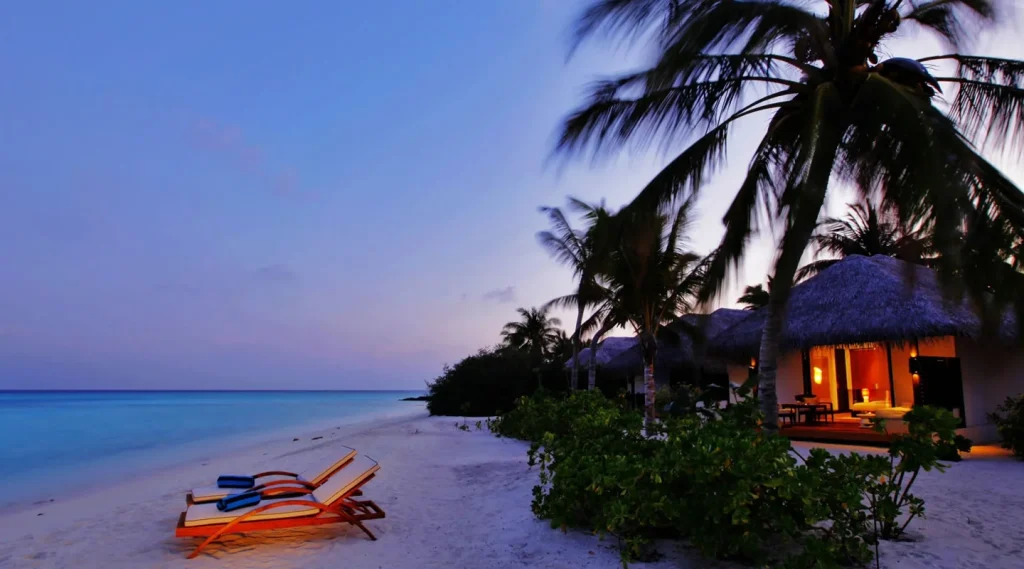
Lakshadweep, a stunning archipelago located in the Arabian Sea, is the smallest Union Territory of India. The name “Lakshadweep” is derived from two Sanskrit words: “Laksha” (meaning 100,000) and “Dweep” (meaning islands), signifying the large number of islands in the region. However, there are 36 islands, 12 atolls, 3 reefs, and 5 submerged banks spread across 30,000 square miles of the Arabian Sea.
These islands are located approximately 200 to 400 kilometers off the southwestern coast of India, primarily to the west of the state of Kerala. The Union Territory’s capital is Kavaratti, and it is known for its tropical climate, rich marine biodiversity, unique culture, and stunning landscapes of coral reefs and pristine beaches.
Lakshadweep has a population of around 64,000 (as per the 2011 census), and its economy is primarily based on fishing, coconut cultivation, tourism, and, to a lesser extent, coir production. The native people are predominantly of Malayalam descent, with Islam being the predominant religion.
Historical Facts about Lakshadweep
Early History The early history of Lakshadweep is not well-documented, but it is believed that the islands were originally uninhabited. The first settlers are thought to have arrived around the 7th century. These settlers were likely of South Indian origin, specifically from the Malabar Coast (Kerala), bringing with them the Malayali language and customs.
Arrival of Islam The spread of Islam in the region is attributed to the efforts of early Arab traders. By the 12th century, Islam had become the dominant religion on the islands. The Arab traders, who arrived for trade and to spread their religion, are believed to have introduced a distinct Islamic culture that shaped the traditions and way of life of the Lakshadweep people.
Colonial Period During the colonial era, Lakshadweep was controlled by the Portuguese (1500-1663), followed by the Dutch, and eventually the British. Under British rule, the islands were part of the Madras Presidency. The British mainly used the islands as a supply base for the navy and a center for coir production and coconut plantations.
Post-Independence After India gained independence in 1947, Lakshadweep was initially administered as part of the state of Kerala. However, in 1956, Lakshadweep became a separate Union Territory. The territorial status was confirmed in 1961, and the archipelago has since been under the direct administration of the Government of India.
Geopolitical and Cultural Significance Due to its geographical location in the Arabian Sea, Lakshadweep has held strategic importance for India, especially in terms of maritime security and trade. The islands are also home to a unique blend of cultural influences, combining Malayali, Arab, and Islamic traditions with indigenous elements.
Development and Tourism In recent decades, the government has sought to develop Lakshadweep’s tourism potential, focusing on eco-tourism and sustainable development. The islands are known for their coral reefs, making them a popular destination for scuba diving and water sports. However, this has been done cautiously to preserve the delicate ecological balance of the region.
Cultural and Ecological Aspects
Language and Culture: Malayalam is the predominant language spoken on the islands, though English and the local dialects are also used. The cultural practices are heavily influenced by Islamic traditions, with festivals like Eid and Muharram celebrated with enthusiasm. The islands are also known for their unique folk music and dance forms, which incorporate both indigenous and Islamic elements.
Ecology: The islands are blessed with a rich variety of marine life, including coral reefs, fish, sea turtles, and various species of migratory birds. Due to this, Lakshadweep is home to several protected areas and is a haven for marine biodiversity. The government has also taken steps to protect the fragile marine ecosystem through sustainable tourism and conservation efforts.
In summary, Lakshadweep is a fascinating blend of historical influences, unique cultural practices, and natural beauty. Despite its small size and relatively low population, the archipelago holds significant ecological, cultural, and strategic value for India.
INDIAINNINGS
Campaigns
- Diwali Special
- Independence Day Celebrations
- Holiday on Holi day
- New Year Specials
Help
- Order Tracking
- Terms & Conditions
- Privacy Policy
- Tutorials
- FAQ
Help
- Facebook Chat
- Whatsapp Help
- E-mail Support
- Contact



